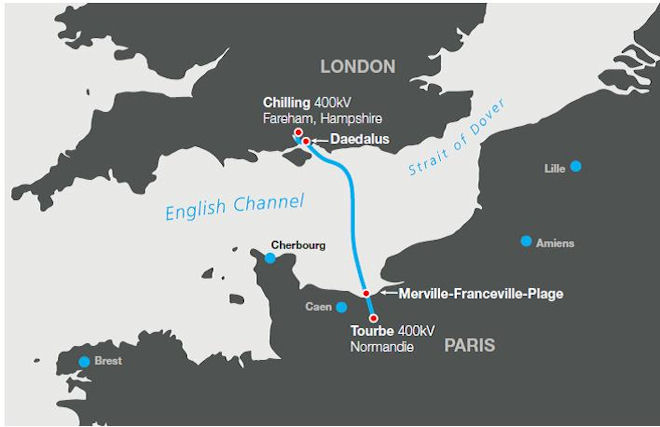
Project Background
The Interconnexion France-Angleterre (IFA2) is being developed as an high voltage direct current (HVDC) link between the French and British transmission systems. It will be capable of transporting at least 1000MW providing power for up to 1 million homes and businesses.
Two HVDC submarine cables will be buried within the seabed, running across 204km between Great Britain(GB) and France. The cable will connect to the GB transmission system at the existing National Grid Electricity Transmission (NGET) 400kV Chilling cable sealing end compound (see the plan above).
IFA2 is at a mature stage of development, with the planning application submitted. Once completed this will be the second link to France following the commissioning of IFA in 1986.
National Grid (NG) Land Business Support
NG Land and Business Support have been contracted by the project to provide the onshore GB land rights to deliver the project, which can be categorised as follows:
1. Acquire permanent land on which to build the converter station with associated access, drainage and service rights
2. Provide temporary land to facilitate the building of the converter station
3. Deliver easements for onshore DC cable route
4. Deliver easements for the onshore AC cable route
Fisher German’s Role
Instructed as an external land agency service, Fisher German initially produced an optioneering report, which assessed various sites. Further review allowed for the optimum converter station site to be identified and cabling routes established. Significant work had been undertaken in identifying potential converter station locations. Two sites, Chilling and Daedalus, were chosen for their environmental and technical feasibility.
Fisher German are responsible for the following parts of the lands elements of the project:
A full review of all potential converter station sites which meet the land criteria specification
Diligently locate any suitable land for further review by the project team
Provide a report detailing all the sites, commenting on pros and cons against the criteria referenced with a plan. Commentary is also required on planning and environmental designation.ReferencingIdentify the individual landowners, occupiers and any third party rights over land (including mortgage lenders and any other relevant parties).Collate findings within a Book of Reference with associated land plans.Provide Access for SurveysEnsure that appropriate means of access and egress are available to enable completion of all required survey works; payments made in line with NG’s Land Rights Strategy. Negotiate Legal Rights via Option AgreementsSecure voluntary rights for all onshore cable easements and access in accordance with NG’s Lands Rights Strategy to be delivered by an agreed programme deadline.Settlement of Compensation Claims Following completion of the works on site, negotiation and agreement of compensation claims submitted by owners and occupiers. For further information, please contact either Matthew Hodgetts on 01905 459432 email here or Samantha Jones-Davies on 01905 459424 email here
